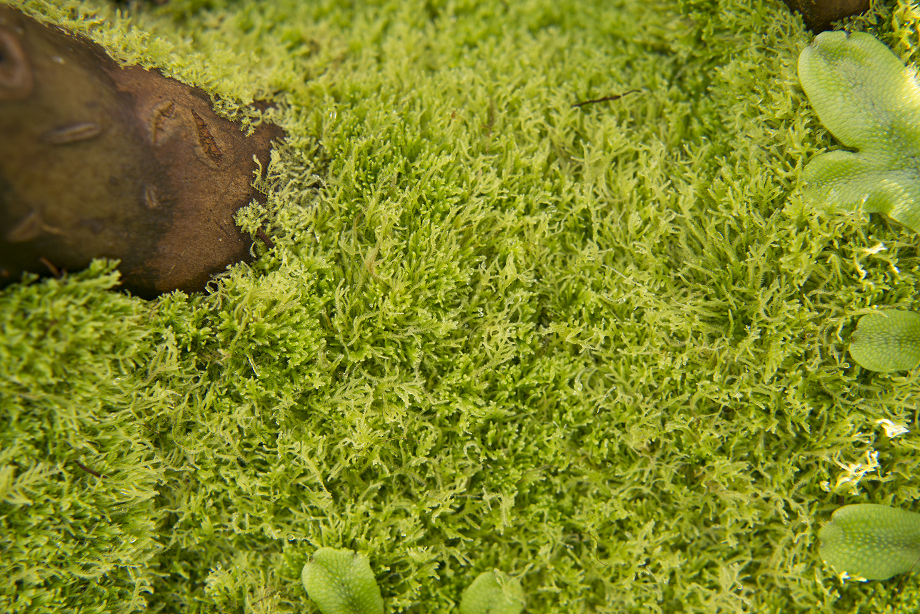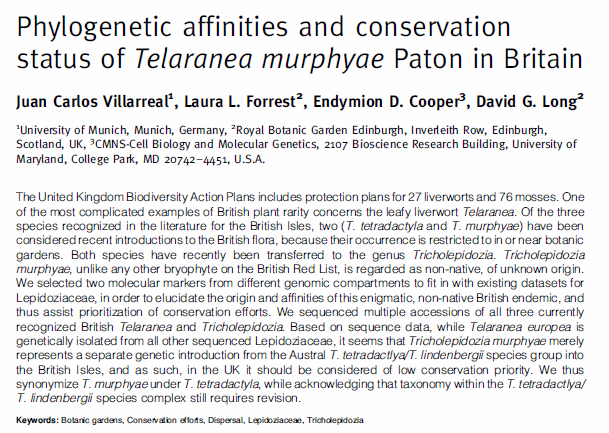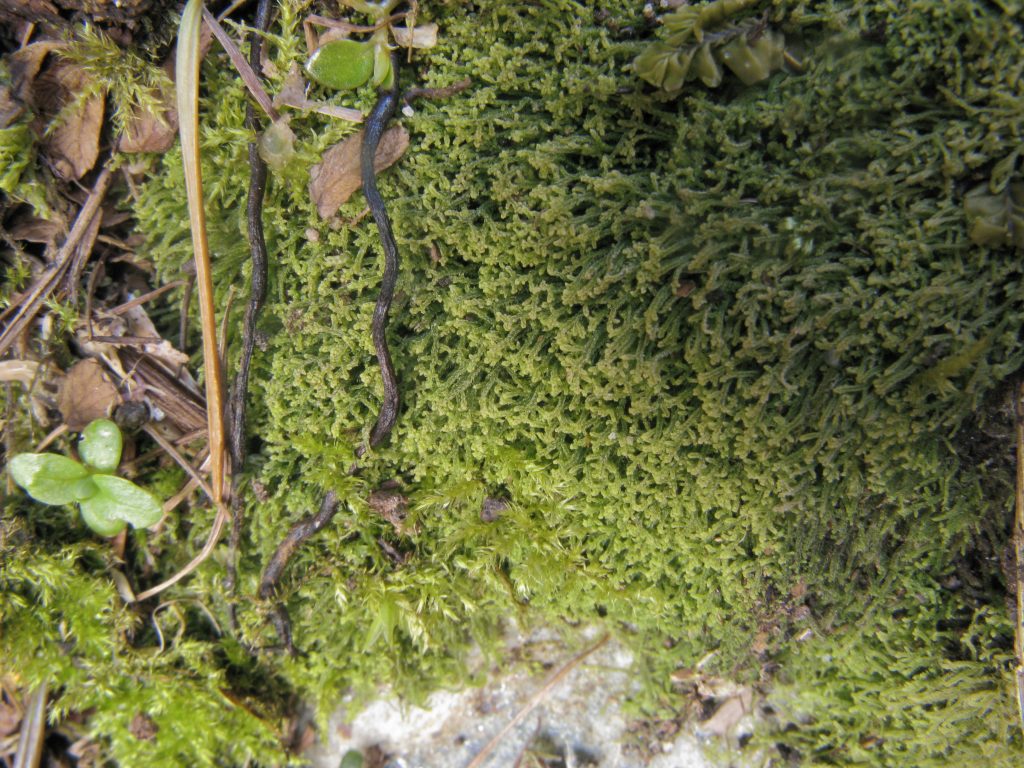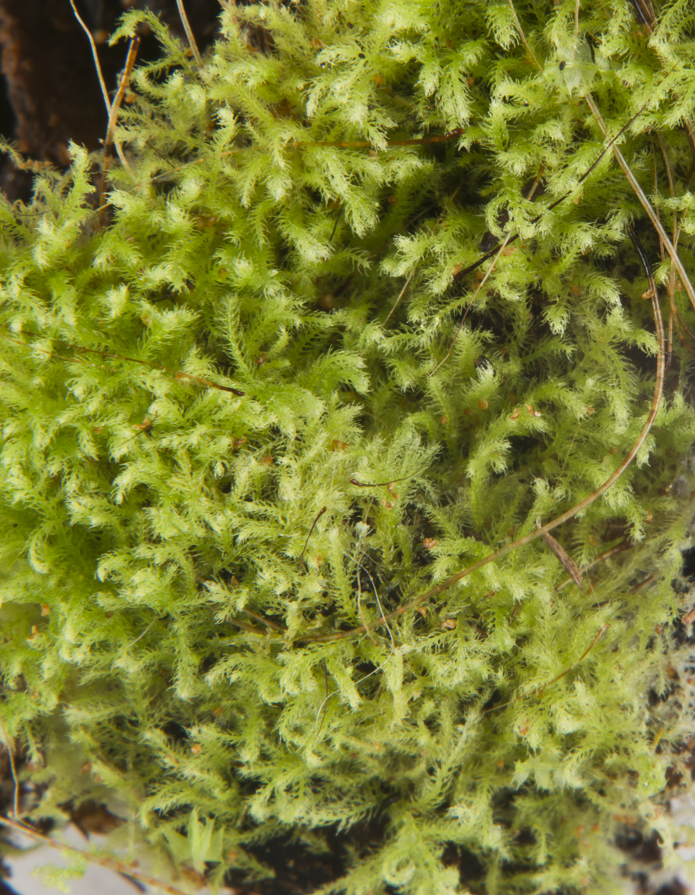Murphy’s threadwort (Telaranea murphyae) has had a singular position in the British flora. The species was described by renowned bryologist Jean Paton in 1965, from plants collected in the south of England. It’s a tiny leafy liverwort that is found in only four locations, at Tresco and St Mary’s on the Isles of Scilly, Branksome Chine, Poole in Dorset and Alum Chine, Bournemouth. Murphy’s threadwort has always been known to be an alien species in our flora, and yet because it’s never been found elsewhere, the sole responsibility for conserving the species lay with the UK. Being non-native, however, it was not considered a priority for UK Biodiversity Action Plans.

Telaranea tetradactyla from the RBGE fern house, growing with Conocephalum conicum; photographed by Lynsey Wilson
Using DNA sequence data from the plant, and comparing it to sequences from other related species, we showed that genetically, the English plants are the same species as a New Zealand plant, Long’s threadwort (Telaranea tetradactyla, synonmy Telaranea longii). Long’s threadwort was already known from several locations in the UK, including inside the fernhouse at RBG Edinburgh, and near the fernery in Benmore. These habitats are not entirely coincidental – the Victorian craze for ferns saw many gardens import living tree ferns from countries such as Australia and New Zealand, with many smaller plants hitching a ride along on their trunks. Today, conscious of plant health issues and the potential transport of pathogens, new plant living collections have to spend time in quarantine before being planted out; past gardeners were less careful, and some of these hitchhikers have subsequently escaped into the local landscape.
Sinking our UK Murphy’s threadwort plants into the New Zealand species means that any conservation requirements now rest instead with New Zealand, although we can continue to enjoy seeing this diminutive mat-forming liverwort in its select few UK locations.
Key reference: Porley, R.D., 2013, England’s Rare Mosses and Liverworts. Princeton University Press.

Villarreal et al. 2014, Journal of Bryology 36(3): 191-199



Haylee
I am a direct descendant of Tèla Renee.